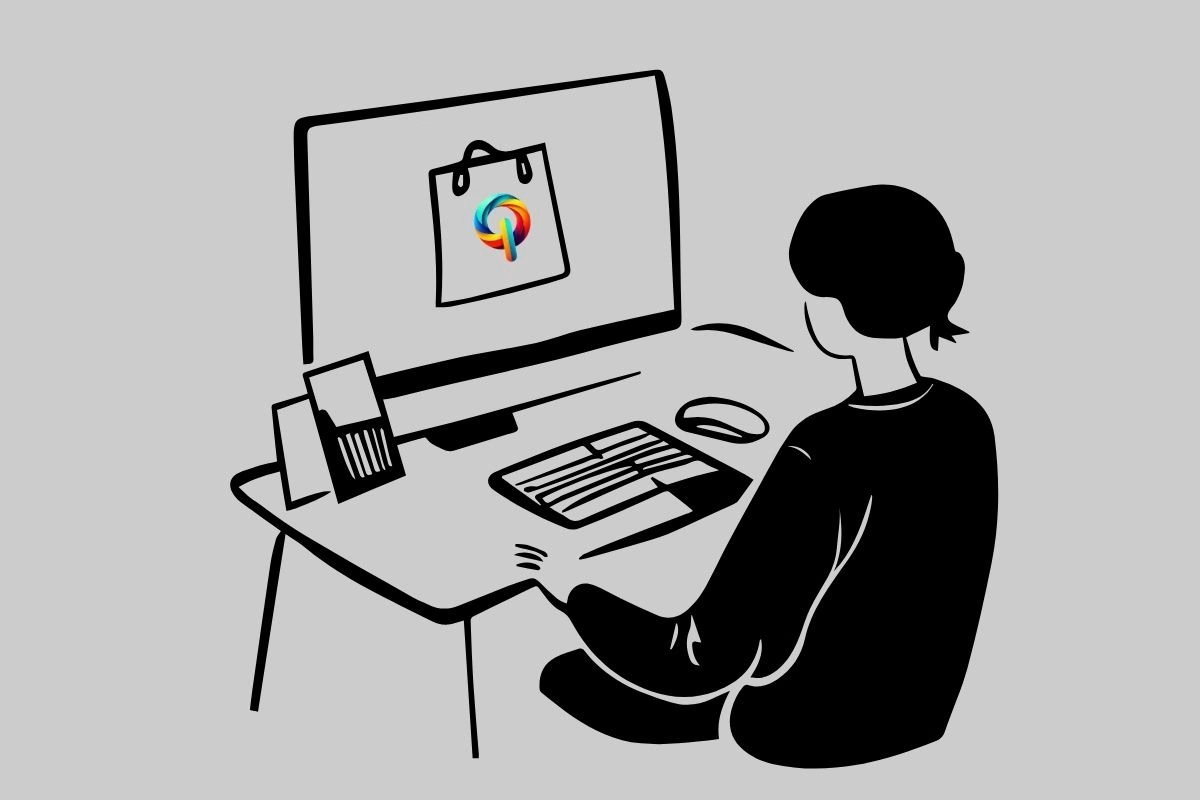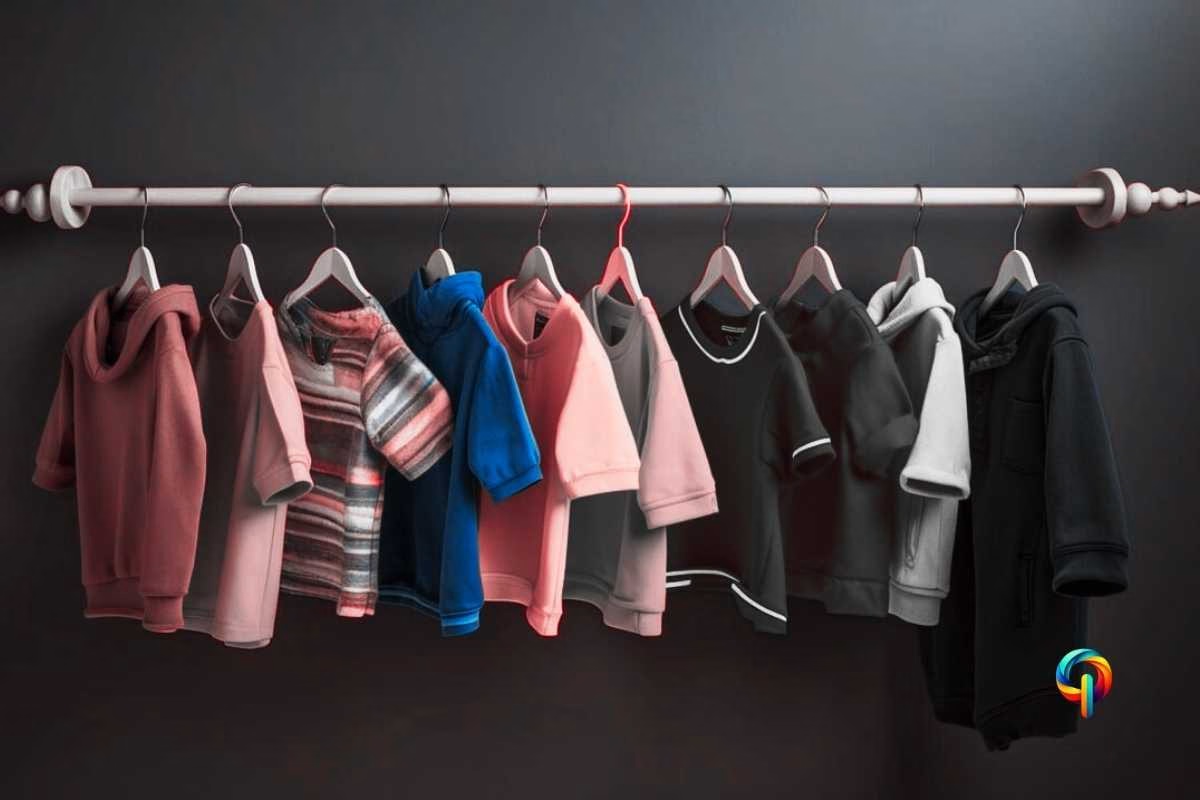
This article examines the significant impact of e-commerce on the fashion industry. It details how online platforms are boosting economic growth by expanding market reach and reducing operational costs for fashion brands. The piece also highlights innovative e-commerce features enhancing customer experiences, such as personalized recommendations and virtual try-ons. Furthermore, it explores the challenges and future trends of e-commerce in fashion, including the rise of virtual shopping and sustainable practices. Ultimately, the text positions e-commerce as a transformative force reshaping the fashion industry’s landscape.
Contents Of The Article
How Is E-Commerce for Fashion Brands Boosting Economic Growth?
Picture this: a world where fashion isn’t confined to physical stores or limited by geography—a world where you can discover the latest trends, try on outfits virtually, and have your favorite pieces delivered to your doorstep, all with just a few clicks. This is the world of e-commerce in fashion brands, and it’s revolutionizing the industry in ways we’ve never seen before.
For fashion brands, e-commerce in fashion brands is more than just a sales channel—it’s a gateway to global audiences, a tool for innovation, and a driver of economic growth. By embracing digital platforms, brands can reach customers far beyond their local markets, optimize operations to reduce costs, and create shopping experiences that are as unique as the shoppers themselves. From AI-driven style recommendations to augmented reality try-ons, technology is transforming how brands connect with consumers and how consumers interact with fashion.
But the impact of e-commerce in fashion brands goes beyond convenience and innovation. It’s reshaping the entire industry, from how products are designed and marketed to how they’re delivered and experienced. Small indie labels can now compete with established giants, sustainability is becoming a priority, and the lines between online and offline shopping are blurring like never before.
In this article, we’ll dive deep into how e-commerce in fashion brands is driving economic growth, overcoming challenges, and shaping the future of the industry. Whether you’re a fashion enthusiast, a brand owner, or just curious about the digital revolution, this is your guide to understanding the transformative power of online shopping.
Let’s explore the exciting of “E-commerce in Fashion: Redefining the Shopping Experience”
What is E-commerce for Fashion Brands?
In today’s digital age, e-commerce for fashion brands has become a cornerstone of success. It’s not just about selling clothes online—it’s about creating a seamless, engaging, and profitable shopping experience that connects brands with customers worldwide. But what exactly does e-commerce for fashion brands entail, and why is it so important?
Let’s break it down.
Definition and Importance of E-commerce for Fashion Brands
E-commerce for fashion brands refers to the online sale of clothing, accessories, and footwear through digital platforms. It’s like having a global storefront that’s open 24/7, where customers can browse, shop, and interact with your brand from anywhere in the world.
The importance of e-commerce for fashion brands cannot be overstated. First, it expands market reach, allowing brands to connect with customers far beyond their local markets. For example, a small boutique in Paris can now sell its designs to shoppers in New York or Tokyo with just a few clicks.
Second, it reduces operational costs. Unlike traditional brick-and-mortar stores, online platforms don’t require expensive retail spaces, utility bills, or large in-store staff. This allows brands to allocate resources more efficiently, investing in areas like product development or marketing.
Finally, e-commerce for fashion brands enhances customer engagement. With tools like personalized recommendations, live chat support, and interactive features like virtual try-ons, brands can create memorable shopping experiences that keep customers coming back.
In short, e-commerce for fashion brands is a powerful tool that drives economic growth, fosters innovation, and helps brands thrive in a competitive industry.
Key Features of E-commerce Platforms for Fashion Brands
What makes e-commerce for fashion brands so effective?
It’s the innovative features that online platforms offer, designed to enhance the shopping experience and drive sales. These features aren’t just about making shopping easier—they’re about creating memorable, personalized, and engaging experiences that keep customers coming back.
Let’s dive into the key features that are transforming the way fashion brands operate:
1. Personalized Recommendations
Imagine walking into a store where the salesperson knows your style, size, and preferences perfectly. That’s exactly what personalized recommendations offer in e-commerce for fashion brands. Using AI and data analytics, platforms analyze a customer’s browsing history, past purchases, and even items they’ve liked or saved. Based on this data, they suggest products that match the customer’s unique style. For example, if you’ve been searching for summer dresses, the platform might recommend lightweight fabrics, trendy prints, or accessories that complete the look. It’s like having a personal stylist who knows your taste better than you do, making shopping faster, smarter, and more enjoyable.
2. Virtual Try-Ons
One of the biggest challenges of online shopping is not being able to try on clothes before buying. Enter virtual try-ons, powered by augmented reality (AR) technology. This feature allows customers to see how clothes, accessories, or even makeup will look on them—right from their phone or computer. For instance, brands like Gucci and Warby Parker use AR to let shoppers “try on” sunglasses or sneakers virtually. This eliminates the guesswork of online shopping, boosts customer confidence, and reduces return rates. It’s like having a fitting room in your pocket, making the shopping experience more interactive and fun.
3. Seamless Payment Options
Nothing kills the excitement of shopping like a complicated checkout process. That’s why seamless payment options are a game-changer for e-commerce for fashion brands. From one-click purchases to digital wallets and buy-now-pay-later services like Klarna, these features make checkout quick and hassle-free. For example, you can split your payment into interest-free installments, making it easier to shop for that designer bag or winter coat without breaking the bank. By simplifying the payment process, brands can reduce cart abandonment and increase sales, creating a smoother shopping experience for customers.
4. Sustainability Filters
As consumers become more eco-conscious, sustainability filters are becoming a must-have feature for e-commerce for fashion brands. These filters allow customers to shop with a clear conscience by selecting products that meet specific sustainability criteria, such as recycled materials, ethical production practices, or carbon-neutral shipping. For example, if you’re looking for a new pair of jeans, you can choose options made from organic cotton or recycled denim. Platforms like ThredUp and Depop are leading the way, offering second-hand and eco-friendly fashion options. These filters empower shoppers to make environmentally friendly choices without sacrificing style, aligning with the growing demand for sustainable fashion.
5. Live Shopping Events
Who says online shopping has to be a solo activity? Live shopping events are turning shopping into a social experience. Brands can host live-streamed fashion shows, Q&A sessions, or product launches, allowing customers to shop in real-time while interacting with hosts. For example, during a live event, a host might showcase the latest collection, answer questions, and offer exclusive discounts—all while viewers can purchase the featured items instantly. This creates a sense of community and excitement, making online shopping more engaging and interactive. It’s like attending a fashion show from the comfort of your home, with the added bonus of being able to shop the looks right away.
Why These Features Matter
These features aren’t just nice-to-haves—they’re essential tools for delivering exceptional customer experiences and driving economic growth. By leveraging these innovations, e-commerce for fashion brands is setting new standards for the industry and shaping the future of retail. Whether it’s through personalized recommendations, virtual try-ons, or live shopping events, these features are making online shopping more convenient, interactive, and enjoyable than ever before.
The Role of E-commerce in the Fashion Industry
The fashion industry is undergoing a massive transformation, and e-commerce for fashion brands is at the heart of this change. From expanding market reach to reshaping consumer behavior, online platforms are redefining how fashion brands operate and connect with their audiences.
Let’s explore how e-commerce for fashion brands is driving economic growth and influencing the way we shop.
How E-commerce Enhances Market Reach for Fashion Brands
One of the most significant advantages of e-commerce for fashion brands is its ability to break geographical barriers. In the past, brands were limited by the location of their physical stores. But with online platforms, a small boutique in Milan can now sell its designs to customers in New York, Tokyo, or Sydney with just a few clicks.
This expanded market reach is a game-changer for brands of all sizes. For emerging designers, it provides an opportunity to showcase their work on a global stage without the need for expensive retail spaces. For established brands, it means tapping into new markets and reaching customers who might never have discovered them otherwise.
The result? Increased revenue and brand visibility. By leveraging e-commerce for fashion brands, businesses can grow their customer base, boost sales, and build a loyal following worldwide. It’s not just about selling products—it’s about creating a global presence that resonates with shoppers everywhere.
The Impact of E-commerce on Consumer Behavior
The rise of e-commerce for fashion brands has fundamentally changed how consumers shop. Today’s shoppers prioritize convenience, personalized experiences, and access to a wide range of products—all of which online platforms deliver effortlessly.
For instance, the ability to shop anytime, anywhere has made online shopping a preferred choice for busy consumers. Features like AI-driven recommendations and virtual try-ons add a personalized touch, helping shoppers find products that match their style and preferences.
Additionally, e-commerce for fashion brands offers access to a wider range of products than traditional stores. Whether it’s a limited-edition designer piece or an eco-friendly collection, shoppers can explore endless options with just a few clicks.
These changing preferences are pushing fashion brands to adapt. To stay competitive, brands must focus on creating seamless, engaging, and personalized shopping experiences. From user-friendly websites to interactive features like live shopping events, the key is to meet customers where they are and deliver what they want.
In short, e-commerce for fashion brands is not just changing how we shop—it’s shaping the future of the fashion industry.
Benefits of E-commerce for Fashion Brands
The rise of e-commerce for fashion brands has brought a wave of opportunities, transforming how businesses operate and connect with customers. From driving economic growth to enhancing customer experiences, online platforms are proving to be a game-changer for the fashion industry.
Let’s dive into the key benefits that e-commerce for fashion brands offers.
Economic Benefits of E-commerce for Fashion Brands
For fashion brands, e-commerce is a powerful tool for driving economic growth. One of the most significant advantages is the reduction in overhead costs. Unlike traditional brick-and-mortar stores, online platforms don’t require expensive retail spaces, utility bills, or large in-store staff. This allows brands to allocate resources more efficiently, investing in areas like product development, marketing, or sustainability initiatives.
Another major benefit is the potential for increased sales. With a global audience just a click away, e-commerce for fashion brands enables businesses to reach customers far beyond their local markets. This expanded reach not only boosts revenue but also helps brands build a loyal international following.
E-commerce also allows fashion brands to scale quickly. Whether it’s a small indie label or an established designer, online platforms provide the tools to grow operations and adapt to changing market demands without the constraints of physical locations.
Finally, e-commerce for fashion brands fosters innovation in marketing and customer engagement. Brands can use data analytics to understand consumer behavior, create targeted campaigns, and offer personalized shopping experiences. This not only drives sales but also builds stronger connections with customers, ensuring long-term profitability.
In short, e-commerce for fashion brands is a win-win, offering cost savings, revenue growth, and endless opportunities for innovation.
Enhanced Customer Experiences Through E-commerce
For consumers, e-commerce for fashion brands has turned shopping into an exciting, personalized, and immersive experience. Thanks to advancements in technology, online platforms are offering features that make shopping more convenient and enjoyable than ever.
One standout feature is AI-driven style recommendations. By analyzing a customer’s browsing history, past purchases, and preferences, e-commerce platforms can suggest products that match their unique style. It’s like having a personal stylist who knows exactly what you’re looking for, making shopping faster and more enjoyable.
Another game-changer is augmented reality (AR) try-ons. Imagine being able to see how a pair of sunglasses, a dress, or even sneakers looks on you—right from your phone. This technology eliminates the guesswork of online shopping, helping customers make confident decisions without stepping into a fitting room.
E-commerce platforms also offer features like virtual showrooms and live shopping events, where customers can interact with hosts, ask questions, and shop in real-time. These experiences create a sense of connection and excitement, making online shopping feel more engaging and interactive.
In essence, e-commerce for fashion brands is revolutionizing the way consumers shop, offering convenience, personalization, and a touch of innovation that keeps them coming back for more.
The Future of E-commerce for Fashion Brands
The fashion industry is on the brink of a digital revolution, and e-commerce for fashion brands is leading the charge. As technology advances and consumer expectations evolve, the future of online shopping is set to be more immersive, personalized, and innovative than ever before. Let’s explore the global trends shaping this transformation and how e-commerce for fashion brands is paving the way for a fully digital fashion industry.
Global Trends in Fashion E-commerce Adoption
The adoption of e-commerce for fashion brands is growing at an unprecedented rate, and it’s not hard to see why. With the rise of smartphones, faster internet, and cutting-edge technologies, shopping for fashion online has become more accessible and exciting than ever.
One major driver is changing consumer preferences. Today’s shoppers want convenience, variety, and personalized experiences, all of which e-commerce for fashion brands delivers effortlessly. Whether it’s browsing the latest trends during a lunch break or ordering a custom-fit outfit from the comfort of home, online platforms are meeting these demands head-on.
Another key trend is the rise of mobile shopping. With more people using their phones to browse and buy, fashion brands are optimizing their platforms for mobile users. From seamless navigation to one-click purchases, mobile-friendly designs are making online shopping smoother and more enjoyable.
Technological advancements are also playing a huge role. Features like augmented reality (AR) try-ons, AI-driven recommendations, and virtual showrooms are not just gimmicks—they’re becoming essential tools for engaging customers and driving sales.
In short, e-commerce for fashion brands is no longer a niche trend—it’s a global movement that’s here to stay.
The Path to a Fully Digital Fashion Industry
As e-commerce for fashion brands continues to evolve, it’s paving the way for a fully digital fashion industry. Imagine a world where virtual experiences and personalized shopping dominate, and physical stores are just one part of a larger, interconnected ecosystem.
One of the most exciting possibilities is the rise of virtual fashion experiences. From digital fashion shows to 3D virtual fitting rooms, brands are creating immersive ways for shoppers to engage with their products. For example, you could attend a live-streamed runway event, try on outfits virtually, and make purchases—all without leaving your home.
Personalization is another cornerstone of this digital future. With advancements in AI and data analytics, e-commerce for fashion brands platforms can offer hyper-personalized recommendations, tailored promotions, and even custom-designed clothing. It’s like having a personal stylist who knows your taste better than you do.
Sustainability is also a key focus. As the fashion industry faces growing pressure to reduce its environmental impact, e-commerce for fashion brands is leading the charge with innovations like virtual sampling, which reduces the need for physical prototypes, and digital wardrobes, which encourage mindful consumption.
The future of e-commerce for fashion brands is bright, bold, and boundary-pushing. It’s not just about selling clothes—it’s about creating experiences, building connections, and redefining what fashion means in a digital age.
More FAQs On E-commerce for fashion brands
1. What is e-commerce for fashion brands?
E-commerce for fashion brands refers to the online buying and selling of clothing, accessories, and footwear through digital platforms. Instead of visiting physical stores, shoppers can browse, compare, and purchase products from the comfort of their homes using websites or apps. It’s like having a global mall at your fingertips, open 24/7, with endless options to explore. This digital approach allows brands to connect with customers worldwide, breaking geographical barriers and creating a seamless shopping experience.
2. How does e-commerce drive economic growth for fashion brands?
E-commerce for fashion brands is a major driver of economic growth. By expanding market reach, brands can connect with customers far beyond their local markets, increasing sales and revenue. Online platforms also reduce operational costs by eliminating the need for expensive physical stores, allowing brands to allocate resources more efficiently. Additionally, e-commerce fosters innovation in marketing and customer engagement, helping brands build stronger relationships with their audience. These factors combined create a powerful engine for growth and profitability.
3. What are the benefits of e-commerce for fashion brands?
The benefits of e-commerce for fashion brands are vast. First, it provides global market access, enabling brands to reach customers worldwide. Second, it reduces overhead costs by eliminating the need for physical retail spaces. Third, it offers personalized customer experiences through AI-driven recommendations and virtual try-ons. Finally, e-commerce provides valuable consumer data, which brands can use to create targeted marketing campaigns and improve customer satisfaction. These advantages make e-commerce a cornerstone of success in the modern fashion industry.
4. What are the challenges of e-commerce for fashion brands?
While e-commerce for fashion brands offers many advantages, it also comes with challenges. Logistics management, such as handling shipping and returns, can be complex and costly. Market competition is fierce, with countless brands vying for attention online. Additionally, ensuring a seamless customer experience—from browsing to checkout—requires constant optimization. Brands must also address data privacy concerns and keep up with rapidly changing technology. Overcoming these challenges is essential for long-term success in the digital marketplace.
5. What are the latest trends in fashion e-commerce?
The latest trends in e-commerce for fashion brands are all about innovation and sustainability. Virtual try-ons, powered by augmented reality (AR), allow shoppers to see how clothes look on them without visiting a store. Sustainable fashion marketplaces are gaining popularity, offering eco-friendly and second-hand options. Social commerce, where brands sell directly through platforms like Instagram and TikTok, is also on the rise. These trends are making online shopping more interactive, eco-conscious, and community-driven, setting new standards for the industry.
6. How is technology shaping fashion e-commerce?
Technology is at the heart of e-commerce for fashion brands. Augmented reality (AR) and virtual reality (VR) are creating immersive experiences, like virtual fitting rooms and digital fashion shows. Artificial intelligence (AI) is powering personalized recommendations, helping shoppers find products that match their style. Even blockchain technology is being used to ensure transparency in sustainable fashion. These innovations are making online shopping smarter, faster, and more engaging, transforming the way brands and consumers interact.
7. What is the future of e-commerce for fashion brands?
The future of e-commerce for fashion brands is incredibly exciting. We’re moving toward a fully digital fashion industry, where virtual experiences and personalized shopping dominate. Imagine attending a virtual fashion show, trying on outfits in a 3D virtual fitting room, and making purchases—all from your home. Omnichannel retail, which blends online and offline shopping, will also play a big role. The future is all about creating seamless, immersive, and sustainable shopping experiences that redefine what fashion means in a digital age.
8. How does e-commerce improve the shopping experience for consumers?
E-commerce for fashion brands enhances the shopping experience in countless ways. It offers unparalleled convenience, allowing shoppers to browse and buy anytime, anywhere. Personalized recommendations, powered by AI, make it easier to find products that match your style. Innovative features like AR try-ons and virtual showrooms add a fun, interactive element to online shopping. Plus, easy returns and detailed product reviews help shoppers make confident decisions. These features combine to create a seamless, enjoyable, and stress-free shopping experience.
9. Can small fashion brands succeed in e-commerce?
Absolutely! E-commerce for fashion brands levels the playing field, giving small brands the tools to compete with established players. Without the need for expensive physical stores, indie labels can reach a global audience through online platforms. Social media and digital marketing also make it easier for small brands to build a loyal following. With creativity, a strong online presence, and the right strategy, even the smallest brands can thrive in the digital marketplace and carve out a niche for themselves.
10. How does e-commerce support sustainable fashion?
E-commerce for fashion brands is playing a key role in promoting sustainability. Online platforms make it easier for brands to offer eco-friendly options, like clothing made from recycled materials or second-hand fashion. Virtual sampling reduces the need for physical prototypes, cutting down on waste. Digital wardrobes encourage mindful consumption by helping shoppers visualize their existing collections. These innovations are making fashion more sustainable and accessible, aligning with the growing demand for eco-conscious shopping.
11. What role does social media play in fashion e-commerce?
Social media is a game-changer for e-commerce for fashion brands. Platforms like Instagram, TikTok, and Pinterest allow brands to showcase their products, engage with customers, and even sell directly through social commerce features. Influencers and user-generated content also play a big role, helping brands build trust and connect with their audience. Social media turns shopping into a social experience, making it more interactive and fun while driving brand awareness and sales.
12. How do fashion brands handle returns in e-commerce?
Returns are a common challenge in e-commerce for fashion brands, but brands are finding ways to make the process smoother. Clear return policies, easy-to-use return portals, and partnerships with logistics providers help streamline the process. Some brands even offer free returns to encourage shoppers to buy with confidence. While returns can be costly, they’re an essential part of creating a positive customer experience and building trust with online shoppers.
13. What makes e-commerce in fashion different from traditional retail?
E-commerce for fashion brands offers several advantages over traditional retail. It provides greater convenience, allowing shoppers to browse and buy from anywhere. The product range is often wider, with endless options available at the click of a button. Personalized shopping experiences, powered by AI and data analytics, make it easier to find products that match your style. Plus, innovative features like AR try-ons and virtual showrooms add a fun, interactive element that traditional retail can’t match. These differences make e-commerce a more dynamic and customer-centric approach to fashion retail.
Conclusion: The Future of Fashion is Digital
The fashion industry is undergoing a massive transformation, and e-commerce in fashion brands is at the heart of this change. What started as a convenient way to shop online has evolved into a powerful force that’s reshaping how we discover, buy, and experience fashion. From offering unparalleled convenience and personalized experiences to fostering innovation and sustainability, online platforms are redefining what it means to shop for style.
For consumers, e-commerce in fashion brands means having the world’s wardrobe at their fingertips. Whether it’s trying on clothes virtually, getting AI-driven style recommendations, or shopping sustainably, the online shopping experience is becoming more immersive, engaging, and tailored to individual needs.
For brands, e-commerce in fashion brands opens up endless opportunities. It levels the playing field, allowing small labels to compete with global giants, while providing established brands with tools to reach new audiences and innovate like never before. The ability to gather consumer data, personalize marketing, and reduce overhead costs makes e-commerce a game-changer for businesses of all sizes.
As we look to the future, the potential of e-commerce in fashion brands is limitless. Virtual fashion shows, 3D fitting rooms, and omnichannel retail experiences are just the beginning. The industry is moving toward a fully digital landscape where creativity, technology, and sustainability intersect to create unforgettable shopping experiences.
The message is clear: the future of fashion is online, and it’s brighter, bolder, and more exciting than ever. Whether you’re a shopper, a designer, or a brand, e-commerce in fashion brands is your gateway to a world of endless possibilities.
So, are you ready to embrace the future?





